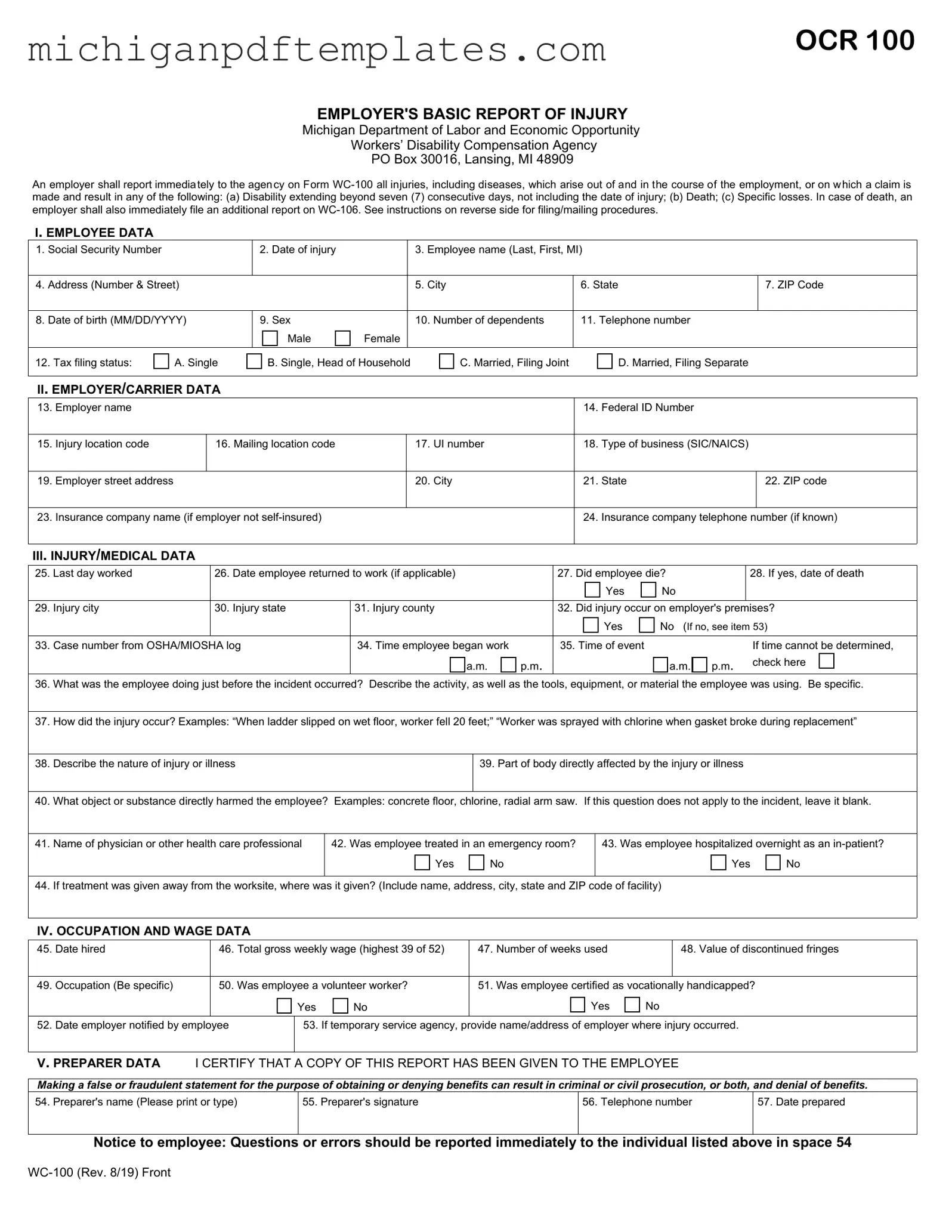Fill in Your Michigan Wc 100 Form
The Michigan WC-100 form is a critical document used by employers to report work-related injuries and illnesses to the Michigan Department of Labor and Economic Opportunity. This form must be completed and submitted when an injury results in disability beyond seven consecutive days, death, or specific losses. Timely and accurate reporting is essential for compliance and to ensure that employees receive the necessary benefits.
To fill out the form, click the button below.
Get Your Form Now
